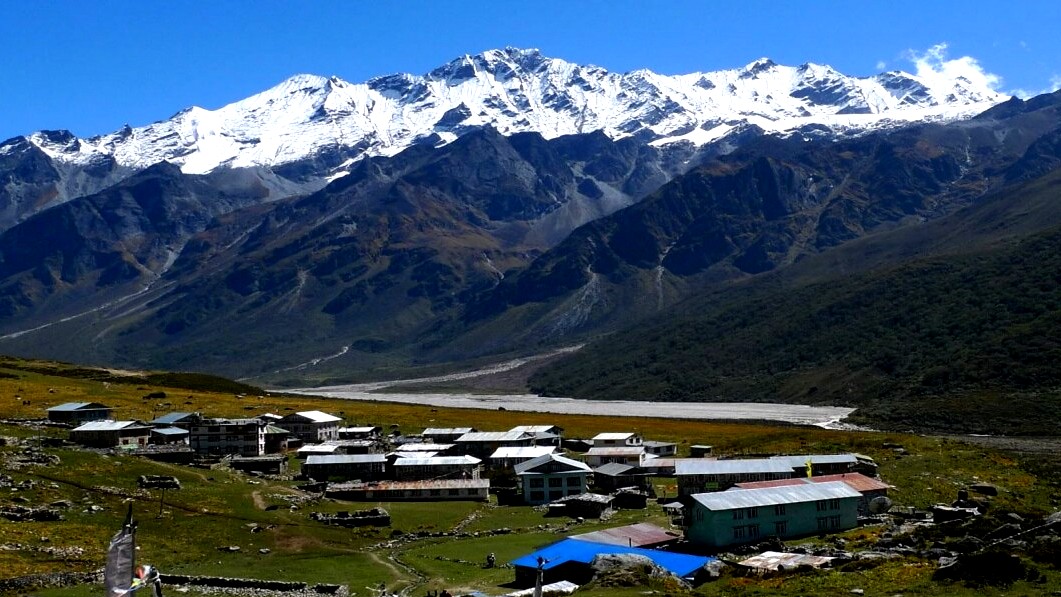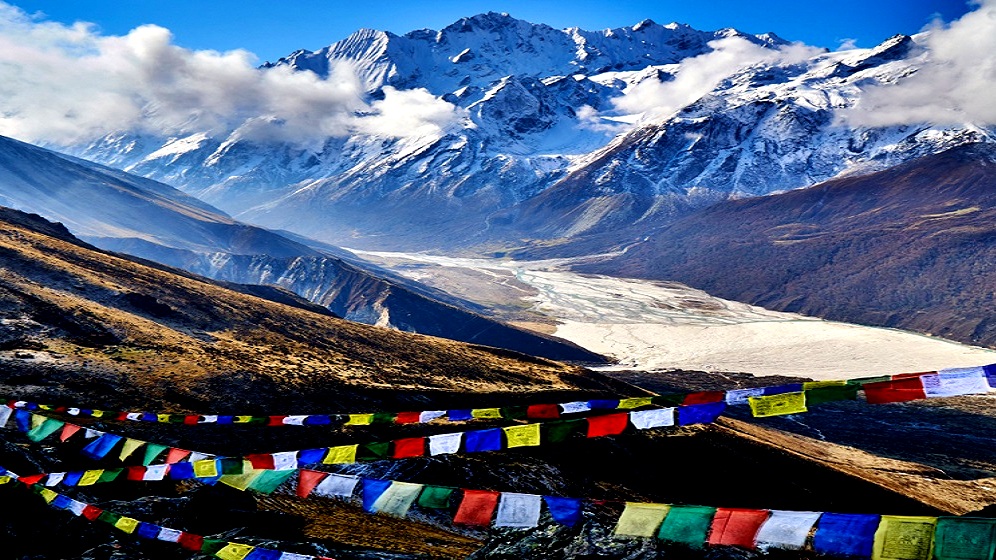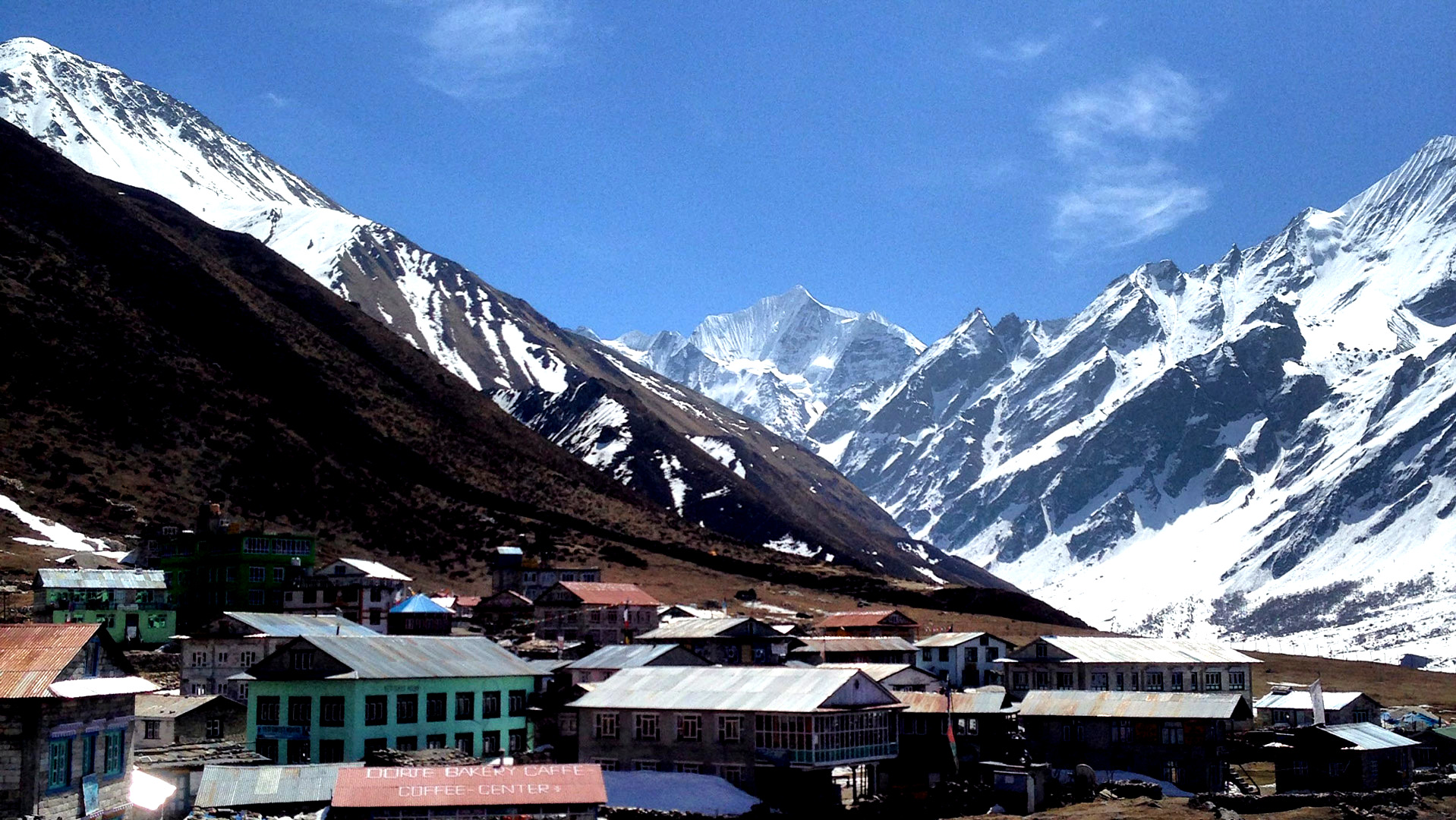A Complete Guide for Langtang Valley Trek
The Langtang Valley Trek stands as a mesmerizing journey into the heart of the Himalayas, offering trekkers a unique blend of breathtaking natural landscapes and rich cultural experiences. This comprehensive guide, meticulously crafted by Luxury Holidays Nepal Pvt. Ltd., is designed to equip adventurers with all the essential information needed for a memorable trek. From navigating through the verdant forests and high alpine pastures of Langtang National Park to exploring the vibrant traditions of the Tamang communities, this trek promises an unparalleled adventure. Key aspects such as the Langtang Trek Itinerary, Best Time to Visit Langtang Valley, Langtang Trek Difficulty Level, Langtang Valley Trek Cost, Langtang National Park Permits, Packing List for Langtang Trek, Langtang Valley Accommodation Options, Langtang Trek Safety and Altitude Sickness, and Cultural Etiquette in Langtang Valley are all crucial for a well-prepared journey. Embark on this captivating trek with Luxury Holidays Nepal and immerse yourself in the awe-inspiring beauty and serenity of Langtang Valley, ensuring a trekking experience like no other.

We pride ourselves on being the premier choice for adventurers seeking to explore the magnificent Langtang Valley Trek. Our comprehensive guide to this awe-inspiring journey is a testament to our commitment to providing an unparalleled trekking experience. With years of expertise and a deep understanding of the Himalayas, we offer meticulously planned itineraries, expert guidance, and personalized services that cater to the needs of every trekker. Our dedication to excellence ensures that every aspect of the trek, from Langtang Trek Itinerary preparation, and navigating through Langtang National Park Permits, to selecting the best Langtang Valley Accommodation Options, is seamlessly handled. Our knowledgeable guides, who are not only experts in navigating the terrain but also deeply familiar with the local culture, will enrich your journey with insights into the Tamang way of life. Safety, comfort, and an authentic Himalayan experience are our top priorities, making us the best company to lead your Langtang Valley adventure. Trust Luxury Holidays Nepal to be your guide for an unforgettable exploration of the Langtang Valley, where every detail is carefully crafted for an extraordinary trekking experience.
Comprehensive Itinerary
Luxury Holidays Nepal presents a Comprehensive Itinerary for the Langtang Valley Trek, meticulously designed to offer an immersive experience into the heart of the Himalayas. This itinerary combines scenic beauty, cultural insights, and physical challenges, ensuring a memorable journey through one of Nepal's most captivating landscapes.
Day 1: Arrival in Kathmandu
- Arrival at Tribhuvan International Airport, Kathmandu.
- Meet and greet by Luxury Holidays Nepal representative.
- Transfer to your hotel and trip briefing in the evening.
Day 2: Drive to Syabrubesi
- Early morning drive from Kathmandu to Syabrubesi (1,550m), approximately 7-8 hours.
- Scenic journey along the Trishuli River, with views of terraced fields and rural landscapes.
- Overnight in Syabrubesi.
Day 3: Trek to Lama Hotel
- Begin trekking from Syabrubesi to Lama Hotel (2,380m), about 6 hours of walking.
- The trail passes through forests, rivers, and suspension bridges.
- Witness the diverse flora and fauna of Langtang National Park.
- Overnight in Lama Hotel.
Day 4: Trek to Langtang Village
- Trek from Lama Hotel to Langtang Village (3,430m), around 6-7 hours.
- The path winds through dense forests before opening up to wide valleys.
- Langtang Village offers a closer look at local Tamang culture and traditions.
- Overnight in Langtang Village.
Day 5: Trek to Kyanjin Gompa
- Continue to Kyanjin Gompa (3,870m), approximately 4 hours away.
- The trail offers magnificent views of the Langtang Lirung and surrounding peaks.
- Explore the monastery and the famous Yak Cheese Factory.
- Overnight in Kyanjin Gompa.
Day 6: Exploration Day at Kyanjin Gompa
- Hike up to Tserko Ri (5,000m) for breathtaking sunrise views and a panoramic Himalayan vista.
- Return to Kyanjin Gompa and spend the rest of the day exploring the area.
- Overnight in Kyanjin Gompa.
Day 7: Trek back to Lama Hotel
- Begin the return journey to Lama Hotel, retracing the path with a different perspective on the landscape.
- Approximately 6-7 hours of trekking.
- Overnight in Lama Hotel.
Day 8: Trek to Syabrubesi
- Trek back to Syabrubesi from Lama Hotel, about 5 hours of walking.
- Last night in the Langtang region.
- Overnight in Syabrubesi.
Day 9: Drive back to Kathmandu
- Drive from Syabrubesi to Kathmandu, approximately 7-8 hours.
- Transfer to your hotel in Kathmandu.
- Farewell dinner hosted by Luxury Holidays Nepal, celebrating the successful completion of your trek.
Day 10: Departure from Kathmandu
- Transfer to Tribhuvan International Airport for your departure flight.
- Bid farewell to Nepal, taking with you memories of an incredible journey through the Langtang Valley.
This Comprehensive Itinerary by Luxury Holidays Nepal ensures that trekkers not only witness the stunning natural beauty of the Langtang Valley but also engage deeply with the local culture, making the Langtang Valley Trek a truly enriching experience.
Optimal Trekking Seasons
Luxury Holidays Nepal provides detailed insights into the Optimal Trekking Seasons for the Langtang Valley Trek, ensuring trekkers can plan their journey for the best possible experience in terms of weather, temperature, visibility, and overall trekking conditions.

Spring (March to May)
- Temperature: Daytime temperatures can range from 10°C to 20°C, while nights can be cooler, dropping to 0°C or lower at higher altitudes.
- Visibility: Spring offers clear skies and excellent visibility, with the mountains and valleys vividly visible.
- Other Considerations: This season sees the blooming of rhododendrons and wildflowers, adding spectacular colors to the landscape. It's a perfect time for photographers and nature enthusiasts.
Autumn (September to November)
- Temperature: Similar to spring, daytime temperatures hover around 10°C to 20°C, with colder nights, especially as altitude increases.
- Visibility: Autumn is characterized by clear skies following the monsoon season, offering some of the best mountain views.
- Other Considerations: This season is considered the best time for trekking in Nepal due to stable weather and moderate temperatures. The post-monsoon freshness makes the air crisp and clear, enhancing visibility.
Monsoon (June to August)
- Temperature: Warmer temperatures range from 20°C to 30°C in lower regions; however, humidity levels are higher.
- Visibility: Rain and clouds can obscure views, making this season less ideal for those seeking clear mountain vistas.
- Other Considerations: Trails can be slippery, and leeches are common. However, the valleys are lush and green, and waterfalls are at their most majestic.
Winter (December to February)
- Temperature: Daytime temperatures can be pleasant, around 6°C to 12°C in lower altitudes, but it can get significantly colder as you ascend, with temperatures plummeting below freezing at night.
- Visibility: Skies are usually clear, offering good visibility, but the cold can be a deterrent for some trekkers.
- Other Considerations: Snowfall at higher elevations may make some trails challenging. However, it's a peaceful time for trekking with fewer tourists.
We recommend Spring and Autumn as the optimal seasons for the Langtang Valley Trek. These periods offer the best balance of temperature, visibility, and trekking conditions, making your journey both enjoyable and safe. However, trekkers prepared for the conditions of other seasons can also find unique beauty and solitude in the Langtang region outside of these peak times.
Accommodation Options
In the serene and rugged terrains of the Langtang Valley, accommodation options blend comfort with the rustic charm of the Himalayas. Luxury Holidays Nepal provides an overview of the Accommodation Options available during the Langtang Valley Trek, ensuring trekkers have a clear understanding of what to expect along their journey.

Teahouses
- Description: Teahouses are small, family-run lodges that offer basic accommodation and home-cooked meals. They are the most common form of accommodation along the Langtang Trek.
- Facilities: Rooms are usually simple, with twin beds, mattresses, pillows, and blankets. Bathrooms may be shared, and hot showers are available for a small fee. Electricity for charging devices is often available in communal areas.
- Dining: Teahouses serve a variety of dishes, ranging from traditional Nepali dal bhat (rice and lentils) to pasta, momo (dumplings), and soups. Breakfast options include porridge, pancakes, and Tibetan bread.
Lodges
- Description: In some parts of the Langtang Trek, especially in larger villages, there are lodges that offer slightly more upscale accommodation compared to teahouses.
- Facilities: Lodges provide similar amenities to teahouses but may offer rooms with attached bathrooms. Some lodges have solar-heated hot water, and a few might offer wifi services.
- Dining: The menu in lodges is similar to that of teahouses but with possibly a wider selection of dishes and sometimes a communal dining room where trekkers can mingle and share experiences.
Camping (Optional)
- Description: For those seeking a more adventurous experience or traveling to remote areas of the Langtang region where teahouses are not available, camping is an option.
- Facilities: Tents are provided, along with sleeping bags, sleeping pads, and a dining tent. A trekking crew sets up camp and prepares meals.
- Dining: Meals are cooked by the accompanying chef or trekking crew, offering a mix of local and international dishes prepared with available ingredients.
Considerations
- Booking in Advance: During peak trekking seasons, it's wise to book rooms in advance, especially in smaller villages with limited accommodation options. Luxury Holidays Nepal can arrange bookings as part of the trekking package.
- Altitude and Temperature: As you ascend, temperatures drop, especially at night. While blankets are provided, bringing a good quality sleeping bag is recommended for additional warmth.
- Cultural Sensitivity: Staying in teahouses and lodges offers a unique opportunity to engage with local communities. Trekkers are encouraged to be mindful of local customs and traditions, including removing shoes before entering living spaces and using water sparingly.
Luxury Holidays Nepal ensures that your accommodation throughout the Langtang Valley Trek is arranged to provide comfort and a genuine Himalayan experience. Whether you choose to stay in teahouses, lodges, or opt for camping, you will enjoy the warm hospitality of the Nepalese people and the stunning natural beauty that surrounds you.
Permit Requirements
For trekkers planning to explore the majestic Langtang Valley, understanding the Permit Requirements is essential. Luxury Holidays Nepal ensures that all travelers are well-informed and fully prepared with the necessary permits for a hassle-free journey. Here's a comprehensive overview of the permits needed for the Langtang Valley Trek:
Langtang National Park Permit
- Purpose: This permit is required for the conservation and maintenance of the Langtang National Park area. It contributes to the preservation of the park's natural and cultural heritage.
- Where to Obtain: The permit can be obtained in Kathmandu at the Nepal Tourism Board office or at the entry point of the park in Dhunche.
TIMS (Trekkers’ Information Management System) Card
- Purpose: The TIMS Card is designed to ensure the safety and security of trekkers by maintaining a record of trekkers in the region. It helps in managing trekkers' information and assists in rescue operations in case of emergencies.
- Where to Obtain: It can be acquired at the Nepal Tourism Board in Kathmandu or at the Trekking Agencies Association of Nepal (TAAN) office.
Important Notes
- Documentation Required: Trekkers need to provide a copy of their passport and two passport-sized photos for each permit.
- Regulations: Always carry your permits with you during the trek, as you may need to show them at various checkpoints along the route.
- Assistance by Luxury Holidays Nepal: We take care of all the necessary paperwork and formalities for obtaining these permits as part of our trekking package. Our aim is to provide a seamless experience for our clients, allowing them to focus on the beauty and challenge of the trek without worrying about bureaucratic procedures.
Understanding and obtaining the required permits is a crucial step in planning your Langtang Valley Trek. With Luxury Holidays Nepal, trekkers can rest assured that all permit requirements are handled efficiently, ensuring a smooth and enjoyable trekking experience.
Safety and Health Tips

Physical Demand
- Rating: The Langtang Valley Trek is generally rated as moderate in terms of difficulty. It doesn’t require technical climbing skills, making it suitable for both novice and experienced trekkers who are in good health and have a reasonable level of fitness.
- Daily Trekking: On average, trekkers will walk for 5 to 6 hours per day. However, some days may require up to 7 hours of trekking, especially when approaching higher altitudes or on the return journey.
Altitude
- Maximum Elevation: The trek reaches its highest point at Kyanjin Ri (4,773 meters) or Tserko Ri (5,000 meters), where the effects of altitude can be felt. Proper acclimatization days are incorporated into the itinerary to mitigate the risks of altitude sickness.
- Acclimatization: Following a carefully planned itinerary that allows for gradual ascent and includes rest days is key to adapting to the altitude.
Terrain
- Trail Conditions: The paths can vary from well-trodden dirt trails to rocky and uneven terrain. Certain sections may involve steep ascents and descents. Trekkers should be prepared for a variety of trail conditions, including potentially crossing small streams or navigating slippery sections.
- Weather Impact: Weather conditions can significantly affect the trail's difficulty, especially during the monsoon season when paths may be muddy and slippery, or in winter when snow and ice can be present.
Preparation
- Physical Fitness: Engaging in cardiovascular exercises like hiking, jogging, or cycling in the months leading up to the trek can enhance endurance and physical preparedness.
- Gear: Proper trekking boots with good grip and support are essential. Additionally, dressing in layers will help manage body temperature across different altitudes and weather conditions.
Mental Preparedness
- The trek requires not just physical readiness but also mental stamina. Being prepared for the challenges of multiple days of trekking, changes in accommodation comfort levels, and the simplicity of life in the mountains can enhance the overall experience.
Support System
- Guides and Porters: Our experienced guides and porters can significantly alleviate the physical strain by providing navigation through challenging terrain and carrying most of your gear, allowing you to focus on the experience and enjoy the trek more fully.
We ensure that trekkers are well-informed about the Langtang Valley Trek's difficulty level and provide comprehensive support to make this incredible journey accessible and enjoyable for all participants. With the right preparation and mindset, trekkers can embark on this adventure with confidence, ready to embrace the natural beauty and cultural richness of the Langtang Valley.
Embarking on the Langtang Valley Trek with Luxury Holidays Nepal offers an unparalleled opportunity to explore the breathtaking landscapes and rich cultural heritage of the Himalayas. From detailed preparation tips and a comprehensive itinerary to insights on optimal trekking seasons, permit requirements, an essential packing list, accommodation options, safety and health tips, and cultural etiquette, this guide ensures trekkers are well-equipped for their journey. The trek's moderate difficulty level makes it accessible to a wide range of adventurers, inviting them to immerse themselves in the beauty of Langtang National Park, interact with local communities, and challenge themselves amidst the rugged terrain. With Luxury Holidays Nepal, trekkers can look forward to a meticulously organized, safe, and enriching trekking experience that will leave them with memories to cherish for a lifetime.
Frequently Asked Questions(FQs): A Complete Guide for Langtang Valley Trek
Q: How long is the Langtang Valley Trek?
A: The trek typically spans 7 to 10 days, depending on your itinerary and pace. This includes acclimatization days and optional side trips.
Q: How difficult is the trek?
A: The Langtang Valley Trek is considered moderate. While it doesn't have excessively challenging terrains like some other treks, altitude can be a factor, and a good level of fitness is recommended.
Q: Do I need any previous trekking experience?
A: No, prior trekking experience isn't mandatory. Having some trekking or long-distance hiking experience can be beneficial.
Q: What is the maximum altitude reached?
A: The highest point of the trek is Kyanjin Ri or Tserko Ri, which stands at an altitude of approximately 5,000 meters or 16,404 feet.
Q: Is it safe for solo travelers, especially women?
A: Generally, the Langtang Valley is safe for solo travelers, including women. However, usual precautions like informing someone of your whereabouts and being culturally respectful should be taken.
Q: Can I access the internet or phone services during the trek?
A: Yes, some villages and teahouses offer Wi-Fi, often for a fee. Mobile network coverage can be spotty but is available in certain areas.
Q: What type of accommodation can I expect?
A: Most trekkers stay in teahouses, which offer basic lodging and meals. Private rooms are available, but amenities are usually fundamental.
Q: Are ATMs available along the trail?
A: No, ATMs are scarce once you start your trek. It's recommended to carry sufficient cash from Kathmandu or larger towns.
Q: What kind of food is available?
A: Teahouses provide a menu of local and international dishes, including dal bhat (traditional Nepali meal), momos (dumplings), and even pasta or pancakes.
Q: How do I deal with altitude sickness?
A: Acclimatizing properly, staying hydrated, avoiding alcohol, and ascending slowly can help prevent altitude sickness. If you experience symptoms, it's vital to descend to a lower altitude and seek medical attention if necessary.
Q: When is the best time to do the trek?
A: Spring (March to May) and Autumn (September to November) are ideal due to clear skies and moderate temperatures. Monsoon (June to August) sees fewer trekkers but has the risk of landslides, and Winter (December to February) can be quite cold.
If you need any further information, please contact us by email: at [email protected], Phone: at +977- 985 100 5129 (WhatsApp)
#Tags
Tripadvisor
5.0803 reviewsGoogle
4.8100 reviewsFacebook
4.1 recommend44 ReviewsTrustpilot
4.1 Great(5 reviews)- Trusted by50K plus traveller




